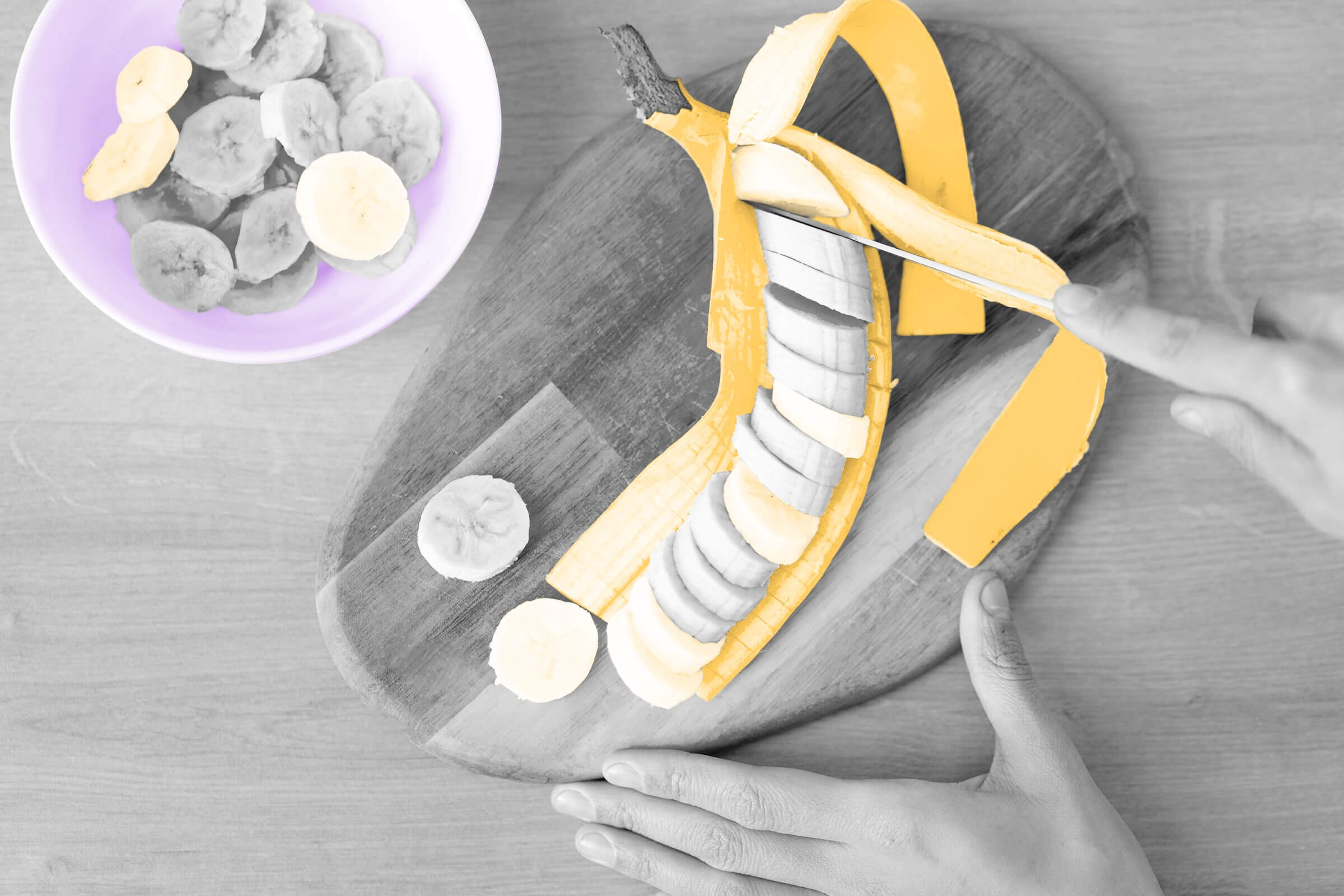

There’s no wrong way to eat a banana — in a smoothie, underneath a mountain of ice cream, or even green (according to a 2019 poll, 5% of Americans prefer bananas in that unripened state). This grocery store staple is one that humans have been eating for at least 6,000 years, with no sign of slowing anytime soon; on average, people around the globe eat 130 bananas per year. These eight facts highlight a few things you may not know about one of the planet’s most beloved fruits.
Americans Didn’t Eat Bananas Until the 1870s

Bananas made their U.S. debut in Philadelphia in 1876, sold to fairgoers attending the Centennial Exhibition (the first world’s fair held in America). For 10 cents, visitors could purchase a foil-wrapped banana and get a taste of a fruit many had never seen before. Today, bananas are one of the most popular fruits among American snackers, who consume an average of 13.2 pounds per person each year.
Sailors Once Believed Bananas Were Bad Luck

Transporting bruisable, temperature-sensitive bananas by boat was no easy feat hundreds of years ago, which could be how sailors became wary of bringing the fruit aboard. Many fishermen and sailors believed that having bananas on a ship invited bad luck, leading to accidents, broken equipment, and a reduction in the number of fish caught. While the origin of the superstition is unclear, some believe it could have started after crew members got sick from eating spoiled bananas or skidded on the slippery peels.
Bananas Don’t Grow on Trees

While banana trees can reach upwards of 40 feet tall, these lumbering plants technically aren’t trees — they’re instead considered giant herbs. Botanists designate trees as having woody stems that contain lignin, a substance that makes them sturdier. Banana plants are instead large, herbaceous stalks made from cellulose, a material that decomposes much faster — a necessity considering that after the fruiting process, the large trunks die back and fall over to make way for new growth.
Bananas Are Actually Berries

The way scientists classify berries doesn’t always jive with how fruit eaters categorize them. That’s certainly the case for bananas, which are botanically berries. To be considered a true berry, a fruit must develop from a flower that contains an ovary; bananas form from nearly foot-long flowers that meet this criteria. Botanists also require fruit to have three layers: an outer skin (the exocarp), a fleshy layer (called a mesocarp), and an interior that holds two or more seeds (the endocarp). While commercially grown bananas don’t have seeds, their wild counterparts do.
Bananas Are Radioactive

Don’t worry — you don’t need a Geiger counter to pick out a bunch of bananas at the supermarket. The potassium in bananas contains trace amounts of radioactive atoms, though because our bodies regularly flush the nutrient out, it’s unable to build up to dangerous levels in our system. Bananas aren’t the only radioactive food: spinach, potatoes, and oranges are, too.
Banana Peels Can Purify Water

Researchers experimenting with ways to remove heavy metals from water have found that banana peels can get the job done. While natural materials like coconut fibers and peanut shells have been used successfully, a 2011 study found that minced banana peels were able to quickly remove lead and copper from water at the same rate or better. The slippery peels can be reused up to 11 times before they lose their toxin-attracting properties.
Humans Generally Eat Just One Type of Banana

There are more than 1,000 species in the banana family, though it's rare to see more than one kind at the grocery store. More than 55 million tons of Cavendish bananas are harvested each year, making them the most popularly grown and consumed species. Cavendish bananas get their name from William Spencer Cavendish, Britain’s sixth Duke of Devonshire, whose estate was home to numerous exotic plants. The duke’s eponymous banana stalks would eventually play a huge role in worldwide banana production — all modern Cavendish banana plants are descendants from those grown at the U.K. estate in the 1830s.
No, Bananas Aren’t Going Extinct

Commercially grown Cavendish banana plants aren’t nurtured from seed, but cloned from existing plants. Farming this way means the species lacks genetic diversity, making it vulnerable to pests and diseases that other species might have evolved to fight off. The main threat concerning commercial bananas is Fusarium wilt, aka “Panama disease,” a soil-borne fungus that is fatal to some species — such as Gros Michel, which was the world’s previously preferred banana. The fungus wiped out most Gros Michel crops in the 1950s, after which farmers switched to the Cavendish species. Modern botanists worry that Panama disease could strike again, destroying the Cavendish species that was once (incorrectly) believed to be immune to the fungus. But with genetic crop engineering and other species to choose from, it’s unlikely bananas will disappear altogether.
